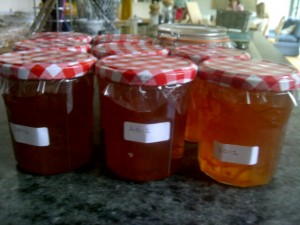If I ever needed any proof of the love my mother has for my father, this is it.
Each January she makes a year’s supply of more than 30 jars of homemade marmalade for him (and a few very special others) to enjoy at breakfast time. Finding this a pretty impressive task, I persuaded her to put down her preserving pan for long enough to talk to me about this labour of love. I wondered if the time of year, type of oranges and recipe she follows are all crucial to producing her quintessentially British golden jelly.

Going back around 100 years, my maternal great grandmother made all of her own preserves and although my mother had inherited her aluminium utensils, she recognised them not to be as safe as John Lewis’ stainless steel. The 1.5kg ofSevilleoranges required to make 10-12 jars can only be purchased at the end of January. So incredibly bitter are these specific oranges that they can only be eaten in this form and crucially important are their pips as when boiled up, they ‘help to get a good set’. Our expert tells me that the trickiest part of the whole process is the cutting the pith away from the rind and it is only at this point that perhaps Radio 4 is turned down for ultimate concentration.
The recipe my marmalade maestro of a mother follows is in the ultra reliable but now out-of-print Katie Stewart’s The Times Cookbook http://amzn.to/wUSzrG . She suggests adding a small amount of crushed coriander seeds in muslin to be boiled up in the mix. I can vouch that this does give the marmalade an extra depth of taste.

So while we all get as sticky as Paddington Bear, I’ll be raising my warm toast to she who peeled, stirred, boiled and squeezed to produce the jar of bright shining happiness.

